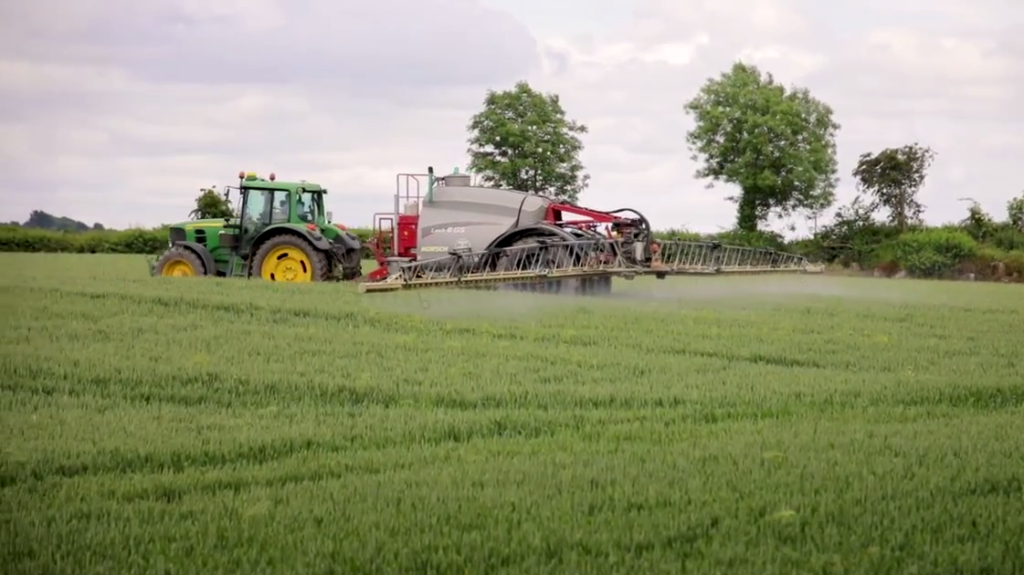With many tillage farmers way behind on crop spraying and spring drilling schedules, the pressure is on to catch up when conditions allow.
This is where the right adjuvant could play an invaluable role.
Technical manager at Interagro, Stuart Sutherland, said:
“Timing of crop protection sprays is crucial to get effective results, and with warmer days on the horizon, we can expect crops, weeds and diseases to all take off, especially where spray timings are already compromised.”
Interagro is a specialist manufacturer of adjuvants, supplying both the Irish and UK markets.
Suboptimal field conditions remain in many fields however. And unsettled weather may continue to hamper timings and effective application.
“This is where adjuvant technology could be extremely beneficial, delivering on three key areas.
“Adjuvants are specifically designed to help overcome the challenges that threaten growers’ ability to spray and compromise crop protection efficacy.
“This season in particular, could offer real practical benefits when it comes to complex tank-mixing and buying more spraying hours. This is where the right adjuvant will make all the difference, and Kantor from Interagro ticks that box well,” he said.
Complex tank mixing
Given the very short window of opportunity that growers now have to get on with field work, up to 13 active ingredients are being placed into spray tank mixes on some farms across the country at the present time.
The chemistries involved may well include herbicides, fungicides, plant growth promoters, foliar applied fertilisers and biostimulants of one form or another.
Here, caution is required, as certain formulations can be tricky to mix together, such as wettable powders and emulsifiable concentrates.

Suhterland continued: “Cold water, low water volume spraying, high pH, and hard water, all make the mixing process more challenging, and adding any more than three products into the tank, increases the risk of incompatibility.
“As well as ensuring products are compatible and best practice is followed, incorporating a compatibility adjuvant can be added to the tank mixture to improve the compatibility of the different products.
He explained that these adjuvants typically work by “modifying the physical and chemical properties of the tank mixture, ensuring that the various components remain stable and well-dispersed throughout the spraying process”.
“The use of tank-mix compatibility adjuvants can help prevent problems such as clogging of spray nozzles, uneven application of pesticides, or reduced effectiveness of the individual products.
“In a challenging year such as this, they are an important tool for tillage farmers to maximise the efficiency and efficacy of their spray applications while minimising potential risks and issues.
“With the season the way it is, fast and efficient mixing will be key to minimise downtime. A compatibility adjuvant can enable complex tank-mixing in a single pass, making it a crucial addition.”
More effective treatments
With spray windows likely to be tight over the coming weeks, the improved rain fastness and drift reduction properties of some adjuvants can help both extend these windows and keep crop protection where it needs to be for longer.
Sutherland said: “Crucially, this can also reduce the risk of off-target damage and environmental contamination, while also providing flexibility in scheduling crop protection applications.”
Although the coming weeks are likely to be challenging, leaning on the benefits of an adjuvant could help alleviate some of the efficacy pressures on crop protection sprays, Stuart said.
Optimal targeting of cereal fungicide sprays is proving difficult, as crops are at variable growth stages.
With disease lurking in the base of many wheat and barley crops, rampant disease pressure could be on the cards when temperatures rise and crops start racing through growth stages, particularly if this coincides with intermittent showers.
“Growers could find themselves in a challenging scenario where both protectant and curative fungicide activity become vital to protect yield building leaves,” Interagro’s technical manager cautioned.
“From a wheat T1 spraying perspective, that means getting sprays on in time to protect fully emerged leaf three and yet to emerge leaf two. In more forward crops at T2, protecting leaf two and the flag leaf will be crucial.
“At these growth stages, optimising fungicide coverage across leaf layers can be challenging, as droplet deposition trials show,” he added.

“The temptation to increase forward speeds and reduce water volumes to cover more hectares with the sprayer, may help with the workload, but this can also compromise coverage, jeopardising the effectiveness of the application.
“Addition of an effective adjuvant will help to create a more optimal droplet size to improve deposition and adhesion to plant surfaces by reducing the number of coarse droplets.
“What’s more, their ability to reduce surface tension and promote spreading can result in better coverage of target plants and leaf layers, leading to more effective treatment overall.”
Where curative fungicide activity comes in to play, it’s also worth leaning on the benefits of an adjuvant to maximise its effectiveness.
“Whilst fungicides permeate leaf cuticles pretty easily – due to their water solubility – you can speed it up with the right adjuvant.
“In a year as challenging as this, the right adjuvant could make a real difference both from a practical point of view and efficacy wise,” Stuart explained.
